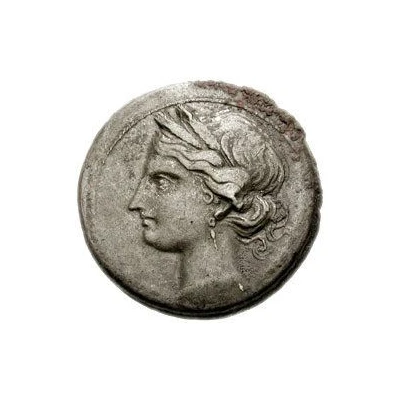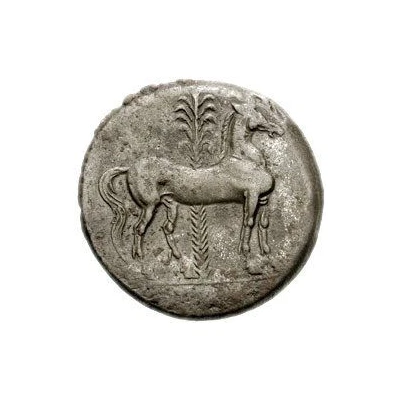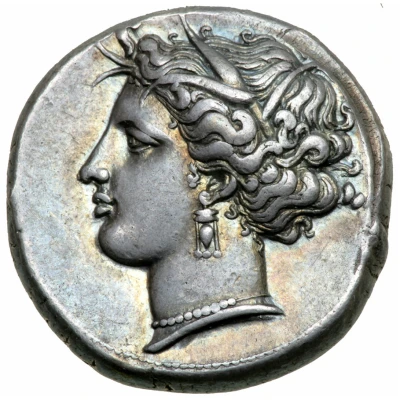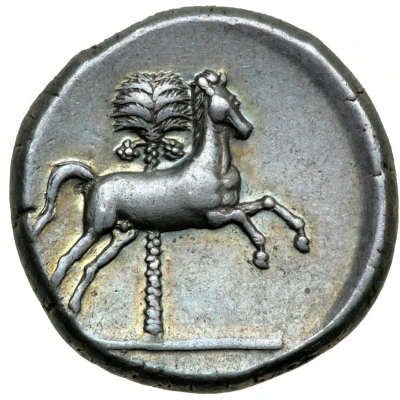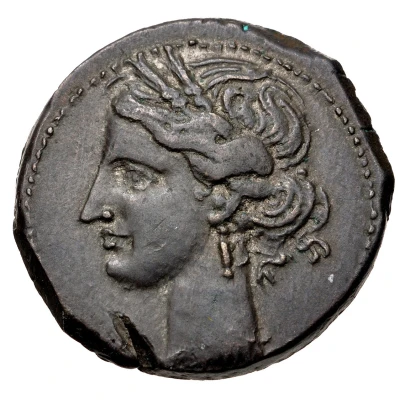
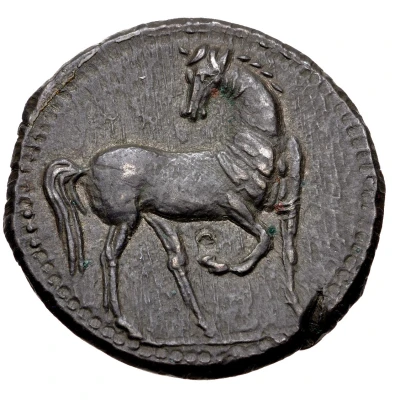

© Classical Numismatic Group, Inc.
Trihemishekel 203 BC - 201 BC
| Billon | 10.41 g | 26 mm |
| Issuer | Carthage (Zeugitana) |
|---|---|
| Type | Standard circulation coin |
| Years | 203 BC - 201 BC |
| Value | 1½ Shekel (1.5) |
| Currency | Shekel |
| Composition | Billon |
| Weight | 10.41 g |
| Diameter | 26 mm |
| Shape | Round (irregular) |
| Technique | Hammered |
| Demonetized | Yes |
| Updated | 2024-10-09 |
| Numista | N#192688 |
|---|---|
| Rarity index | 94% |
Reverse
Horse standing right, head left.
Interesting fact
The Trihemishekel coin was used as a form of currency in the ancient city of Carthage, which was located in present-day Tunisia. The coin's name, "Trihemishekel," comes from the Phoenician language and means "three shekels." The shekel was a unit of weight and value that was used in ancient times, and the Trihemishekel coin was equivalent to three shekels. The Trihemishekel coin was made of a metal called Billon, which is an alloy of silver and copper. It weighed 10.41 grams and had a diameter of around 20-25 millimeters. The coin features an image of a horse's head on one side and a palm tree on the other. The horse's head symbolized the city of Carthage, while the palm tree represented the fertility and prosperity of the region. Overall, the Trihemishekel coin is an interesting piece of history that provides insight into the economy and culture of ancient Carthage.
